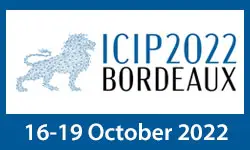Iterative Deep Learning Based Segmentation on Cyclic Immunofluorescence Imaging by Using Recursive Refinement
Xiaoyang Guo, Anuj Srivastava
-
Members: FreeSPS
IEEE Members: $11.00
Non-members: $15.00Length: 07:18
03 Apr 2020
Past approaches for statistical shape analysis of objects have focused mainly on objects within the same topological classes, e.g., scalar functions, Euclidean curves, or surfaces, etc. For objects that differ in more complex ways, the current literature offers only topological methods. We introduces a far-reaching geometric approach for analyzing shapes of graphical objects, such as road networks, blood vessels, brain fiber tracts, etc. Such objects exhibit difference both in ge- ometry (shapes of curves forming edges are different) and topology (number and connectivity of nodes are different). We utilize a quotient structure to develop useful statistical tools to compute not only the difference between shapes but also the mean shapes and principal variations. The power of the framework is demonstrated on a variety of data including neurons and brain arteries.



